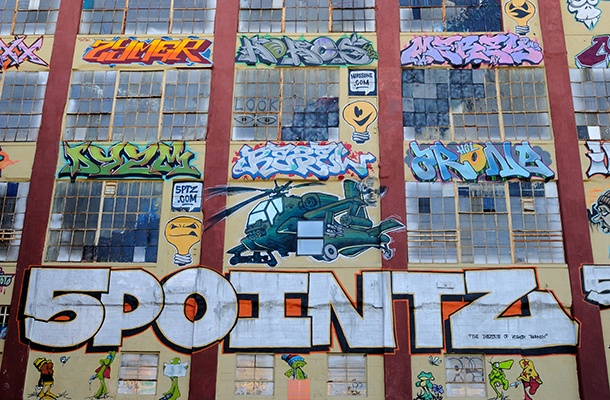The 5Pointz Case: A Landmark Decision With An Outsized Impact

The art world has been keeping a close eye on the aftermath of the historic 5Pointz ruling. The case, Cohen v. G & M Realty L.P., held that New York real estate developer Gerald Wolkoff must pay $6.7 million to a group of graffiti artists for painting over their work without notice. The decision was issued in February by Judge Frederic Block of the Eastern District of New York.
What is the 5Pointz Complex?
5Pointz, a complex comprised of industrial buildings in Queens, New York had become a world-renowned graffiti mecca. Until the artwork was painted over in 2013, artists and tourists from all over the world had visited the site. For his part, Wolkoff allowed the graffiti but had always made clear that he would one day redevelop the property. In 2013, he announced his intent to demolish the 5Pointz buildings to make way for luxury high-rises. Graffiti artists worked feverishly to save 5Pointz, albeit unsuccessfully. Their efforts included applying for landmark status, fundraising to purchase the property, and finally, seeking an application in court to enjoin the demolition.
Wolkoff Sued For Violating Graffiti Artists' Rights
The court denied the artists’ petition. Just a few days later, Wolkoff whitewashed the entire building overnight, without notifying the artists. The artists subsequently sued, alleging a violation of their rights under the Visual Artists Rights Act (VARA), which protects the “moral rights” of living artists. The lawsuit marked the very first time that a court considered the application of VARA to graffiti art. After nearly five years of litigation, the case came down in favor of the artists. Many in the art industry were taken aback by the decision. Wolkoff had always made clear to the artists that their ability to graffiti the building would be temporary.
Nevertheless, Judge Block ruled that Wolkoff violated the artists’ rights under VARA, finding that the artworks were of “recognized stature” - a critical element of the statute. This level of recognition is unprecedented for graffiti, which is still commonly viewed as vandalism. Even more surprising, Judge Block awarded the maximum amount of statutory damages possible for each destroyed work ($150,000 a pop). Wolkoff is appealing the decision, and the judgment has been stayed pending that appeal.
Start Learning For Free
Start a no-risk free trial today to watch any Lawline On Demand course for free. Choose from over 1,800 courses, including attorney well-being, ethics, professional development and 40+ practice areas.

What Impact Could This Decision Have in the Future?
The final outcome of the case could have tremendous repercussions for both property owners and graffiti artists. To the dismay of many, we may now see less collaboration between developers and artists moving forward. Or, property owners might begin requiring artists to waive their VARA rights altogether. For both developers and artists, here are the biggest takeaways:
- Make sure you know your rights moving forward; and
- Be sure to put any agreements in writing.
Last Updated: 11/15/2023
.png)




